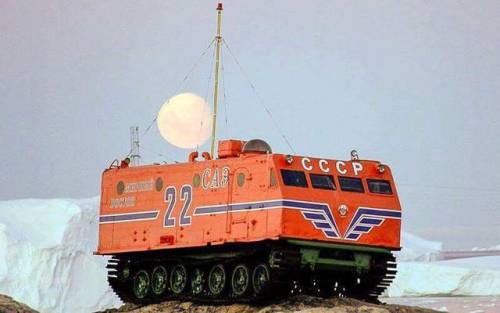Find your tribe in a Sea of Creativity
Exploration - Blog Posts

Brave is the bee, brave is the hand that holds it.
From my expedition to summit Africa's beautiful Mt. Kilimanjaro, this porter allows a bee to rest gently on his outstretched hand. I marveled at the man's patience and trust in this tiny creature.
Visit more of my collections at Idee Explores.

Photo by Idee_Explores
Such a path could only be traveled by one... sensitive to the landmarks of a trackless wilderness. -Thomas Merton The wild Adirondacks in autumn, a riot of warm colors blanket the mountain ledges above this icy-cold lake, which from our stone-perch vantage point, seemed endless.
If beautiful mountains inspire you, I invite you to visit my website's Adirondack Mountains & Collections Portfolio!
My Float Space
Am I #shark bait here?? Coolness settles into my wetsuit as I snap photos of our #survey team's boat activities. I can't help taking a moment to appreciate that my office today is the crisp clear and ultra-salty water of Italy's Tyrrhenian Sea.

Join the adventure - find me on IG @idee_explores!

Announced today, March 9th 2022, intrepid expedition team Endurance22 in the Weddell Sea, carrying The Explorers Club flag, uncovered the resting place of Ernest Shackleton's ship Endurance. Find out why this discovery's’ timing has such a poetic twist!
The Unbound
Stars have guided celestial navigators through the centuries. Today they beckon the imagination, drawing us up into the heavens. Unbind your thoughts, channel your inner star child, and leave your worries behind. 💫

Slow the World: Water.falls
A video clip series to sooth your soul. By exploration photographer Idee Montijo.
A deep plunging waterfall hidden away in the wilderness of New England slows down for a time. Watch the drops and streams leisurely drape over the jagged rock face. Draw in a full breath. The finest mist coats and cools your skin as your ears fill with soothing water sounds.
I invite you to experience the Idee Explores video portfolios on Vimeo and YouTube.

What's life like for people living along the Amazon River in a town known as the Venice of South America? I invite you to visit my short travelogue of my time in Peru during the monsoon season.

Chasing Waterfalls
Image by Idee Montijo

Waterfalls - those hidden sites where Earth's jagged landscape is no barrier to rushing water's journey to its final destination. Be the water, take the plunge, go #relentless 🌊
When was the last time you took a dip in "wild water"?
Follow Idee as she journeys to bring you daily inspirational images and stories from expeditions to fields afar. 🤠
•• Instagram | Vimeo | Twitter ••
Valley Dusk
From the Sun Valley Sunset Collection by Idee Montijo.

That time of day as warm yellow daylight yields to twilight's cool blue tones, yet in wildfire season as smoke causes the light to fade from orange to gray, hazy smoke diffuses the ridgeline details. This image reminds me that we must clear the smoke to see what's truly in front of us. So.. let's clear the air on why we have such difficulty in beating climate change.
👉👉 Visit inspiring image collections and my photo map! 🌏
Prints of this image available here on Idee-Explores.com
True Romance
A plump Super Pink Moon rises, casting its warm glow over the cool Atlantic Ocean. This image reminds me that we each have our own beauty, and when we engage with another beautiful soul the results can be magnificent.

"I always look up at the moon and see it as the single most romantic place within the cosmos." — Tom Hanks
Explorer and Expedition Photographer Idee Montijo delivers unique images from fields afar. Follow her for your daily dose of wanderlust and exploration! 🤠
•• Twitter | Instagram | Medium ••

Portrait of a Primate
Image by @idee-montijo. Tanzania, Africa.
My image collections are full of primate facial expressions, and this expression of what I perceive as calm and curiosity is among my favorites.
What do you see in this expression?
Feel free to visit featured collections at Idee Explores and field videos on my new "Idee Montijo" YouTube channel! 🐒
@idee-montijo introduces you to Gary the resident Goliath Grouper & Friends living at a popular shipwreck site off Florida's southeast coastline! Goliath Groupers are massive fish that have a curious nature!
Music by Dlondlobala Njalo (Soul Drummer Mix) Ladysmith Black Mambazo | Joseph Shabalala
What’s the Difference Between Adventure and Exploration?
An increasingly controversial question: In today’s world of travel-blogging and adventure sports, how can we define true exploration?
It’s a frigid winter’s eve at Norway’s Finse 1222 Lodge, high above the tree line overlooking Hardangerjøkulen glacier. The rustic lodge is accessible only by train or dogsled, and in its library huddled before a blazing fireplace, a group of road-worn explorers discuss past and future expedition challenges while sampling spirits they’ve collected from around the globe.
Centuries ahead of Shackleton and Amundsen, early explorers began taking to land and sea. The late Sen. John Glenn once said at an Explorers Club Annual Dinner, “Explorers push dragons from the map.” — they uncover and discover the mysteries of our oceans, space, earth, and humankind. Though today’s satellite imagery of Earth is void of dragons, we still have a lot to explore. So, let’s first understand, “What’s exploration?”

Cenote survey during a 2015 expedition in Mexico’s Yucatan State. Image by Idee Montijo © 2021
The late Jim Fowler, wildlife champion and explorer extraordinaire of Mutual of Omaha’s Wild Kingdom fame, once described exploration as the pursuit of information that advances the greater body of knowledge on mankind, space, oceans, and the Earth. How explorers undertake that pursuit varies from expedition to expedition, but the common thread is a hope of ‘discovery’ or the real possibility of making a contribution to our greater body of knowledge.
Bob Ballard, ocean explorer and National Geographic Explorer-At-Large, provided the world with a first glimpse of the legendary ocean liner Titanic since its unexpected demise in 1912. But in an NPR interview, Ballard describes what he considers his most important contribution to science, stating, “ …The hydrothermal vents, for example, I would think was my greatest discovery. We knew where Titanic was, but we never knew about these new life forms, and we didn’t know they were there.” It’s all about the data.
While adventure can be one element of many expeditions, it differs from exploration in that explorationinvolves a pursuit of data that increases our larger body of knowledge while adventureis a personal experience that can provide individual growth.
It is only in adventure that some people succeed in knowing themselves — in finding themselves. ~ André Gide, winner Nobel Prize in Literature, 1947
An important aspect of the human experience, adventure helps people become more confident in their personal capabilities, to broaden their own knowledge of the world, and advance personal skills. Psychology’s Self-Determination Theory (SDT) is a theory that explains human motivation and personality with respect to inherent growth trends and natural psychological needs. Researchers in the 1980s proposed that we have three basic and universal psychological needs that promote intrinsic motivation: autonomy, competence, and relatedness. Adventure addresses all three of these needs. For example, autonomy can be gained through accomplishing new tasks like navigation where one has a freedom to choose their course, competence is earned through successful interaction with one’s environment through activities like building a shelter, and relatedness is the desire to belong to a group of others with similar experiences.
Whether pushing dragons from the map like those explorers gathered on a Norwegian mountaintop or seeking personal growth and development by blogging about one’s whitewater rafting trip, we benefit when driven by curiosity to engage with the world around us in exploration and adventure.
Get inspired with expedition portfolios at IdeeExplores.com and on Instagram (at)idee_explores.
Hubble’s Guide to Viewing Deep Fields
They say a picture is worth a thousand words, but no images have left a greater impact on our understanding of the universe quite like the Hubble Space Telescope’s deep fields. Like time machines, these iconic images transport humanity billions of light-years back in time, offering a glimpse into the early universe and insight into galaxy evolution!

You’ve probably seen these images before, but what exactly do we see within them? Deep field images are basically core samples of our universe. By peering into a small portion of the night sky, we embark on a journey through space and time as thousands of galaxies appear before our very eyes.
So, how can a telescope the size of a school bus orbiting 340 miles above Earth uncover these mind-boggling galactic masterpieces? We’re here to break it down. Here’s Hubble’s step-by-step guide to viewing deep fields:
Step 1: Aim at the darkness
Believe it or not, capturing the light of a thousand galaxies actually begins in the dark. To observe extremely faint galaxies in the farthest corners of the cosmos, we need minimal light interference from nearby stars and other celestial objects. The key is to point Hubble’s camera at a dark patch of sky, away from the outer-edge glow of our own galaxy and removed from the path of our planet, the Sun, or the Moon. This “empty” black canvas of space will eventually transform into a stunning cosmic mosaic of galaxies.

The first deep field image was captured in 1995. In order to see far beyond nearby galaxies, Hubble’s camera focused on a relatively empty patch of sky within the constellation Ursa Major. The results were this step-shaped image, an extraordinary display of nearly 3,000 galaxies spread across billions of light-years, featuring some of the earliest galaxies to emerge shortly after the big bang.
Step 2: Take it all in
The universe is vast, and peering back billions of years takes time. Compared to Hubble’s typical exposure time of a few hours, deep fields can require hundreds of hours of exposure over several days. Patience is key. Capturing and combining several separate exposures allows astronomers to assemble a comprehensive core slice of our universe, providing key information about galaxy formation and evolution. Plus, by combining exposures from different wavelengths of light, astronomers are able to better understand galaxy distances, ages, and compositions.

The Hubble Ultra Deep Field is the deepest visible-light portrait of our universe. This astonishing display of nearly 10,000 galaxies was imaged over the course of 400 Hubble orbits around Earth, with a total of 800 exposures captured over 11.3 days.
Step 3: Go beyond what’s visible
The ability to see across billions of light-years and observe the farthest known galaxies in our universe requires access to wavelengths beyond those visible to the human eye. The universe is expanding and light from distant galaxies is stretched far across space, taking a long time to reach us here on Earth. This phenomenon, known as “redshift,” causes longer wavelengths of light to appear redder the farther they have to travel through space. Far enough away, and the wavelengths will be stretched into infrared light. This is where Hubble’s infrared vision comes in handy. Infrared light allows us to observe light from some of the earliest galaxies in our universe and better understand the history of galaxy formation over time.

In 2009, Hubble observed the Ultra Deep Field in the infrared. Using the Near Infrared Camera and Multi-Object Spectrometer, astronomers gathered one of the deepest core samples of our universe and captured some of the most distant galaxies ever observed.
Step 4: Use your time machine
Apart from their remarkable beauty and impressive imagery, deep field images are packed with information, offering astronomers a cosmic history lesson billions of years back in time within a single portrait. Since light from distant galaxies takes time to reach us, these images allow astronomers to travel through time and observe these galaxies as they appear at various stages in their development. By observing Hubble’s deep field images, we can begin to discover the questions we’ve yet to ask about our universe.

Credit: NASA, ESA, R. Bouwens and G. Illingworth (University of California, Santa Cruz)
Hubble’s deep field images observe galaxies that emerged as far back as the big bang. This image of the Hubble Ultra Deep Field showcases 28 of over 500 early galaxies from when the universe was less than one billion years old. The light from these galaxies represent different stages in their evolution as their light travels through space to reach us.
Step 5: Expand the cosmic frontier
Hubble’s deep fields have opened a window to a small portion of our vast universe, and future space missions will take this deep field legacy even further. With advancements in technologies and scientific instruments, we will soon have the ability to further uncover the unimaginable.


Slated for launch in late 2021, NASA’s James Webb Space Telescope will offer a new lens to our universe with its impressive infrared capabilities. Relying largely on the telescope’s mid-infrared instrument, Webb will further study portions of the Hubble deep field images in greater detail, pushing the boundaries of the cosmic frontier even further.
And there you have it, Hubble’s guide to unlocking the secrets of the cosmos! To this day, deep field images remain fundamental building blocks for studying galaxy formation and deepening not only our understanding of the universe, but our place within it as well.
Still curious about Hubble Deep Fields? Explore more and follow along on Twitter, Facebook, and Instagram with #DeepFieldWeek!
Make sure to follow us on Tumblr for your regular dose of space!
Roman’s Heat-Vision Eyes Are Complete!

Our Nancy Grace Roman Space Telescope team recently flight-certified all 24 of the detectors the mission needs. When Roman launches in the mid-2020s, the detectors will convert starlight into electrical signals, which will then be decoded into 300-megapixel images of huge patches of the sky. These images will help astronomers explore all kinds of things, from rogue planets and black holes to dark matter and dark energy.

Eighteen of the detectors will be used in Roman’s camera, while another six will be reserved as backups. Each detector has 16 million tiny pixels, so Roman’s images will be super sharp, like Hubble’s.

The image above shows one of Roman’s detectors compared to an entire cell phone camera, which looks tiny by comparison. The best modern cell phone cameras can provide around 12-megapixel images. Since Roman will have 18 detectors that have 16 million pixels each, the mission will capture 300-megapixel panoramas of space.
The combination of such crisp resolution and Roman’s huge view has never been possible on a space-based telescope before and will make the Nancy Grace Roman Space Telescope a powerful tool in the future.
Learn more about the Roman Space Telescope!
Make sure to follow us on Tumblr for your regular dose of space!

The First Man in Space
On April 12, 1961, aboard the spacecraft Vostok 1, Soviet cosmonaut Yuri Gagarin becomes the first human to travel into space.
https://www.instagram.com/spaceexploration_genz/
https://www.vsual.co/shop/space-exploration-gen-z
https://www.redbubble.com/people/astro3antica/shop

Mars Perseverance Rover Landed
Mars Perseverance rover landed on the surface of Mars.
https://www.instagram.com/spaceexploration_genz/
https://www.vsual.co/shop/space-exploration-gen-z
https://www.redbubble.com/people/astro3antica/shop

Mars Perseverance Rover Head Section
The Mars Perseverance rover with its several cameras: SuperCam (Remote Micro-Imager), Mastcam-Z and Navcam.
https://www.instagram.com/spaceexploration_genz/
https://www.vsual.co/shop/space-exploration-gen-z
https://www.redbubble.com/people/astro3antica/shop
Here’s Some_Thing really interesting to Look at.
A Soviet Arctic Exploration Vehicle with Tracks on it.




Arctic exploration vehicle Harkovchnka.
Because in space, nobody is your dad
In space, no one can tell you when to go to sleep
Space batteries in my space ship died, waiting for a space jump
Today feels like Friday because it feels like the end of the week but I know it's not Friday because I have Friday off. But it still feels like too much of a Friday to not be Friday, it's like second Friday before Friday because it doesn't feel exactly Friday enought to be first Friday you know?
Just got one space final left, wish me luck
I know I should be saying more about space, but I have been really busy with space stuff
In space, no one can tell you when to go to sleep
Oh I've met him, he is great with directions

I’m Going Another Way to Find You by Norman Duenas
I've got another space meme for y'all. Brace yourselves because this one is a real doozy

You should look up at the night sky more often, shooting stars are more common than you think
I know some may have went to college to get more knowledge,
BUT WE WENT TO JUPITER!!!



